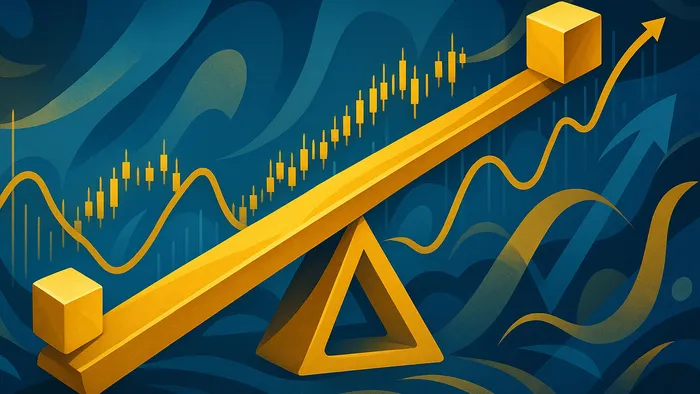Explore the mechanics of warrants, their benefits and risks, and effective trading strategies to enhance your investment portfolio.
Warrants are financial tools that let you control more shares with less capital, offering leverage and flexibility. They grant the right to buy or sell an asset at a set price before expiration and are often issued by companies. Here's what you need to know:
- Leverage: Small stock price changes can lead to larger warrant value shifts (e.g., a 5% stock increase might result in a 20% warrant gain).
- Types: Call warrants (profit from rising prices) and put warrants (protect against falling prices).
- Key Factors: Strike price, expiration date, and underlying asset impact value. Warrants also include intrinsic value (difference between stock and strike price) and time value (premium for time left).
- Risks: Time decay, liquidity issues, issuer risk, and potential for significant losses due to leverage.
- Comparison: Warrants differ from options and futures in term length, issuer, and settlement methods.
Quick Comparison Table:
| Feature | Warrants | Options | Futures |
|---|---|---|---|
| Issuer | Companies/Institutions | Exchange-traded | Exchange-traded |
| Term Length | Long (>1 year) | Short (<1 year) | Standardized |
| Settlement | Optional exercise | Optional exercise | Mandatory settlement |
| Share Impact | Can create new shares | No dilution effect | No share impact |
| Standardization | Variable terms | Standardized contracts | Standardized contracts |
Warrants can amplify returns but come with risks, so understanding their mechanics and managing leverage is crucial. Keep reading for trading strategies and tips.
Warrant Mechanics
Core Elements
Warrants gain their value from three main factors: the strike price, expiration date, and the underlying asset. The strike price is the set amount for buying or selling the asset, while the expiration date is the deadline to exercise the warrant.
Warrants often have long maturities, sometimes over five years, which impacts both their pricing and strategic uses. The market price of a warrant is made up of two parts:
| Component | Description | Example |
|---|---|---|
| Intrinsic Value | The difference between the stock price and strike price | Stock at $50, strike at $40 = $10 intrinsic value |
| Time Value | The premium above intrinsic value based on time left | Warrant trading at $12 = $2 time value |
Call and Put Warrants
Call warrants allow investors to buy at a fixed price, benefiting from rising markets. Put warrants, on the other hand, let investors sell at a set price, offering protection in falling markets.
"A stock warrant is a contract that gives someone the right to buy or sell a security at a certain price before a specific date." – Empower
When call warrants are exercised, companies issue new shares, which can dilute the value of existing shares. Exercising put warrants leads to share buybacks, as companies repurchase stock at the agreed price.
Price Factors
Several factors influence warrant prices, creating a dynamic relationship between market conditions and technical details:
- Market Conditions: Rising stock prices, higher volatility, and increased interest rates tend to push up warrant values.
- Technical Elements:
- Longer expiration periods usually increase a warrant's value.
- Higher implied volatility raises prices.
- The gearing ratio, which measures price sensitivity to stock movements, plays a key role.
Pricing models, like the modified Black‑Scholes, consider these factors along with warrant‑specific elements such as dilution effects. The gearing ratio is especially critical—it shows how much a warrant's price responds to changes in the underlying stock. While higher gearing ratios can make warrants more attractive, they also come with greater risk.
Stock Warrants Explained: How to Buy Warrants
Pros and Cons
Benefits
Warrants provide a way to gain leveraged market exposure without requiring significant capital upfront. For example, a 20% increase in the price of the underlying share can lead to a 60% return on the warrant investment. This leverage can amplify returns significantly.
Another appealing feature is the defined risk limit. The most you can lose is your initial investment. This makes warrants attractive to investors seeking higher returns while keeping losses under control.
Warrants also offer broad market access, enabling investors to:
- Trade in international markets
- Diversify across asset classes
- Implement advanced trading strategies
- Take advantage of longer investment horizons
Risk Factors
The leverage that makes warrants attractive can also work against you. Even small changes in the price of the underlying asset can lead to significant losses in the warrant's value.
"You should only invest in warrants if you understand the nature of the products (specifically your rights and obligations) and the extent of your exposure to risk." – ASX
Some key risks include:
- Time Decay: Warrants become worthless if not exercised before maturity.
- Liquidity Issues: Limited trading volumes can make it harder to exit at favorable prices.
- Early Termination: If the underlying security is delisted, the warrant may be closed early.
- Issuer Risk: There's always a chance the issuer might default on their obligations.
Investment Tool Comparison
Warrants differ from other investment tools in several ways. Here's a quick breakdown:
| Feature | Warrants | Options | Futures |
|---|---|---|---|
| Issuer | Companies/Financial Institutions | Exchange-traded | Exchange-traded |
| Term Length | Generally longer (>1 year) | Shorter (<1 year) | Standardized |
| Settlement | Optional exercise | Optional exercise | Mandatory settlement |
| Share Impact | Can create new shares upon exercise | No dilution effect | No share impact |
| Standardization | Terms can vary | Standardized contracts | Standardized contracts |
Trading Methods
Starter Techniques
For those just starting, MINI warrants are a straightforward way to dive into warrant trading. These let beginners grasp the basics while capping risk to the initial investment.
- Long MINI Warrants: Buy when you expect prices to rise.
- Short MINI Warrants: Sell when you anticipate a price drop.
- Position Sizing: Manage your risk by carefully allocating your investment.
Expert Methods
Experienced traders often build on the basics by incorporating deeper analysis and risk management techniques.
-
Premium Analysis Strategy
Study how warrant premiums fluctuate to identify ideal entry and exit points. Premiums tend to rise during bullish markets and fall during bearish ones. -
Hedging Technique
Combine positions in the underlying asset with warrants to manage risk—e.g., hold shares while buying put warrants for protection.
Example Trade
Market Context: A tech stock is trading at $100 during a bullish market phase.
Trade Setup:
- Warrant Type: Call warrant with a six-month expiry.
- Strike Price: $110.
- Premium: Trading below its historical average.
- Investment: $5,000.
Execution Steps:
- Entry Analysis
- A lower-than-average premium may signal undervaluation.
- Technical indicators and trading volume suggest upward momentum.
- Position Management
- Use stop-loss orders to limit potential losses.
- Set clear profit targets.
- Track premium changes to decide when to exit.
- Risk Controls
- Scale your positions gradually.
- Continuously assess market conditions as expiration approaches.
Advanced traders often refine their analysis using LuxAlgo’s exclusive toolkits and AI Backtesting platform. LuxAlgo provides exclusive tools such as the Oscillator Matrix toolkit and AI Backtesting platform to help support better decision-making in warrant trading.
Getting Started
Warrant Selection
When choosing warrants, focus on these key aspects:
- Strike Price: Compare the warrant's strike price to the market price to assess the risk‑reward balance.
- Expiration: Opt for warrants with enough time for your investment thesis to play out.
- Liquidity: Ensure sufficient trading volume to enter and exit positions easily.
Trade Steps
-
Research Phase
Study the warrant’s details and underlying asset—look at price trends, fundamentals, and market conditions. -
Platform Selection
Choose a trading platform that supports warrants. See the tools below. -
Order Execution
- Determine position size (2–5% of capital) and set a stop-loss.
- Use limit orders for precise entries.
- Record your rationale and exit plan in advance.
Trading Tools
Primary Analysis Platforms
- TradingView with LuxAlgo’s Signals & Overlays and Price Action Concepts toolkits
- IG warrant screener
- BME’s SIBE SMART platform
Risk Management Tools
- Position size calculators
- Automated stop‑loss systems
- Alert mechanisms for timely updates
For even sharper insights, try LuxAlgo’s Oscillator Matrix toolkit. It’s great for spotting divergences and analyzing trends, helping you time your entries and exits with precision.
Summary and Next Steps
Key Takeaways
A small 5% movement in the underlying asset can lead to a 20% change in a warrant’s value. To trade warrants successfully, grasp their mechanics—including how premiums work and the importance of timing expiration dates.
Key elements for using warrants effectively:
- Manage leverage by sizing positions carefully.
- Analyze warrant premiums to gauge market sentiment.
- Use risk management tools like stop‑loss orders.
- Rebalance regularly to maintain proper exposure.
Trading Tips
Warrants can diversify your portfolio and fine‑tune exposure. By applying the risk management strategies above, you can keep positions within acceptable limits.
One strategy: convert share positions into warrants to free up capital and improve overall exposure.
"Staying invested in the market is important. Diversification that evens out performance over time helps investors keep money consistently invested."
– Rob Haworth, Senior Investment Strategy Director, U.S. Bank Asset Management
Market Trends
The warrant market—especially in tech—offers new opportunities as dynamics shift. Recent tech performance underscores the importance of careful selection and timing.
Current Trends:
- More investors are focusing on warrant‑based hedging strategies.
- Advanced warrant screening tools are becoming widely available.








